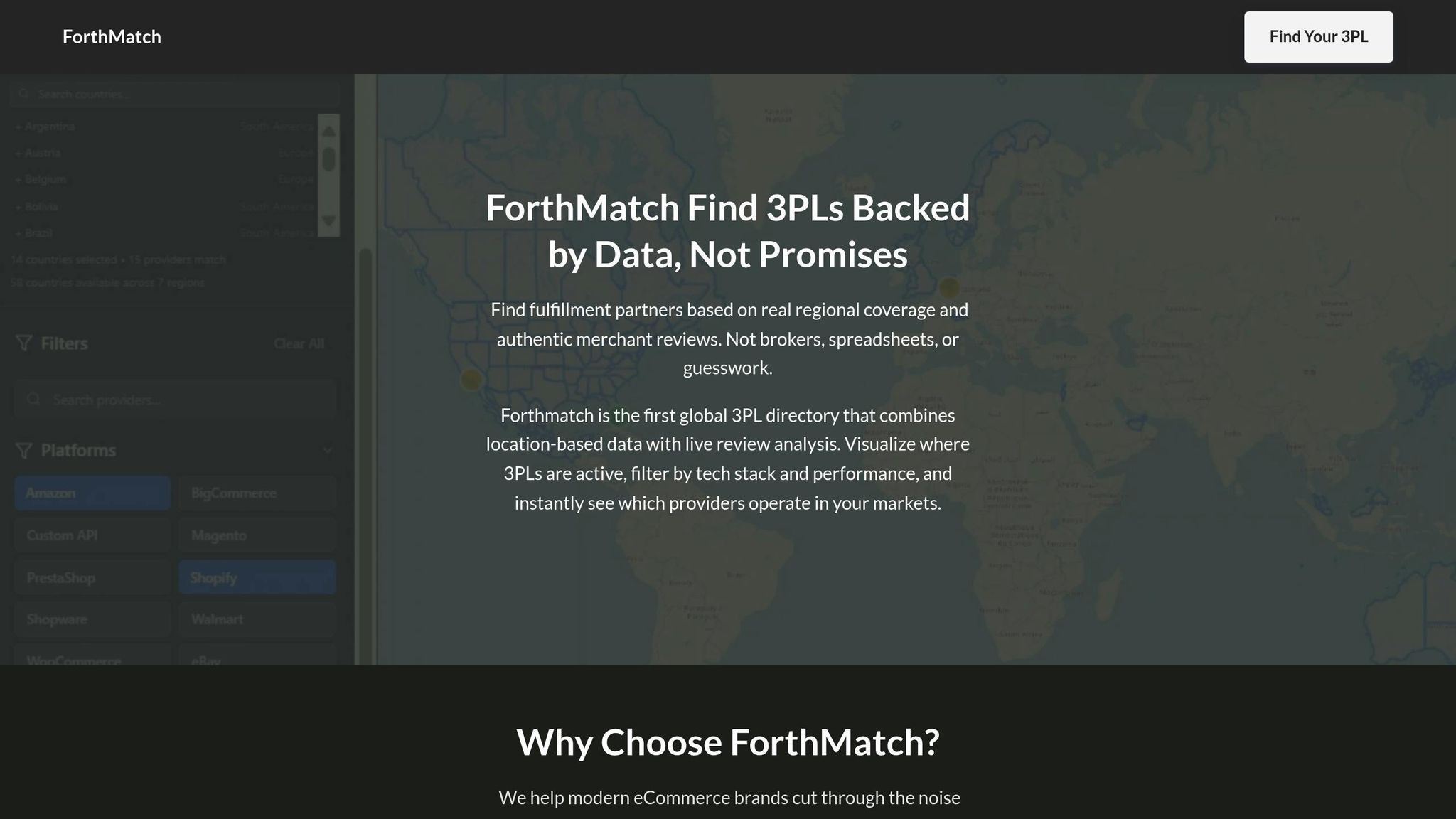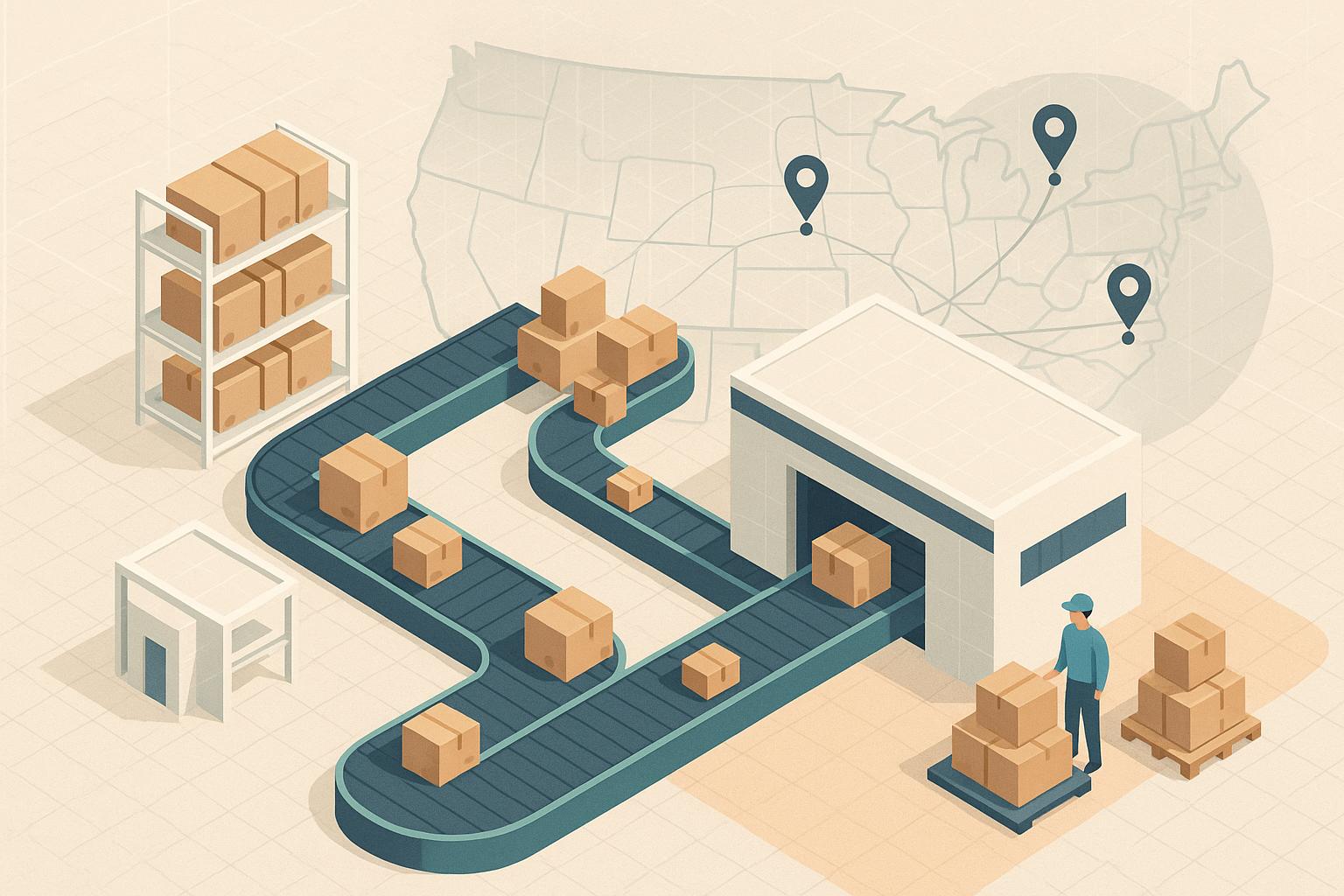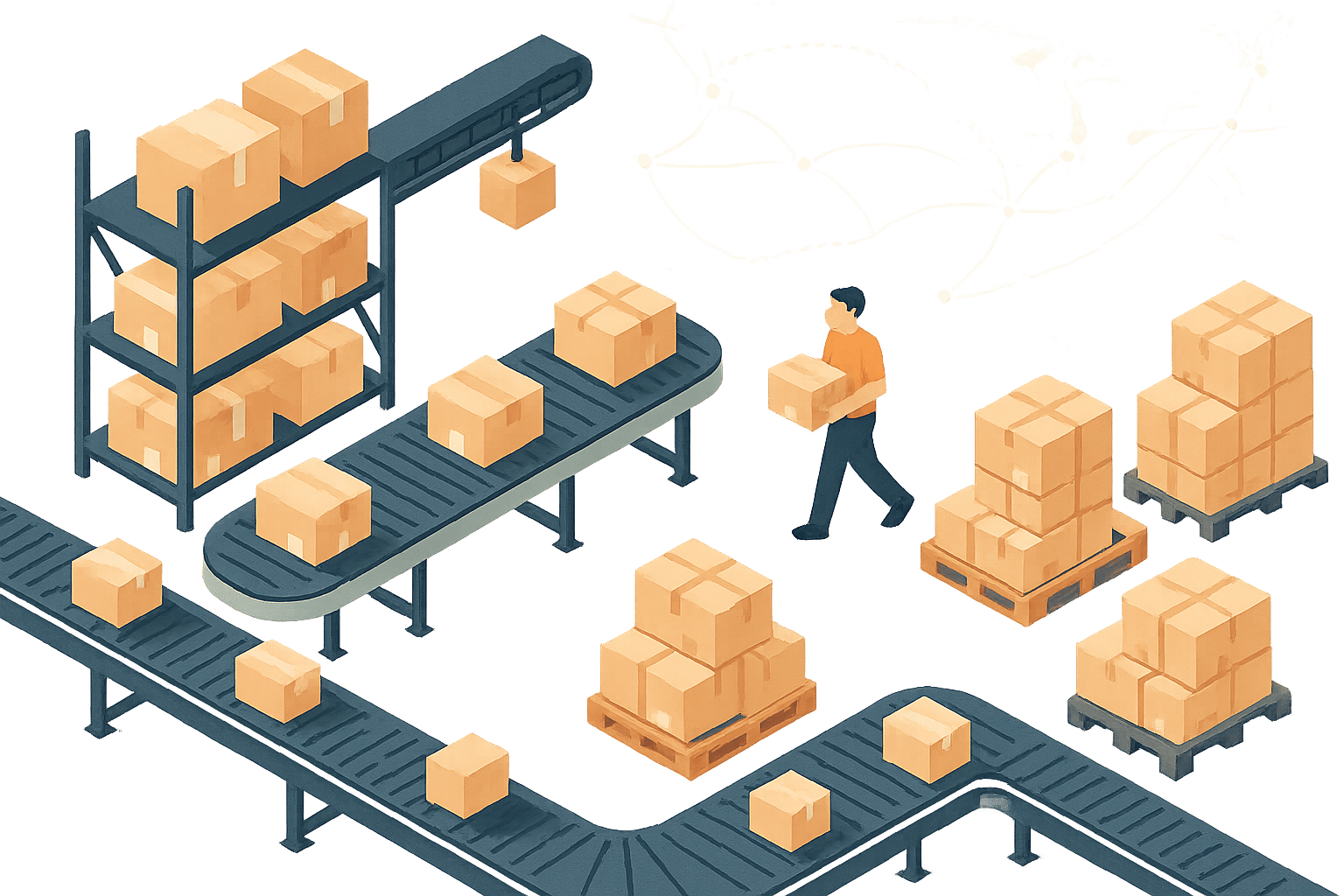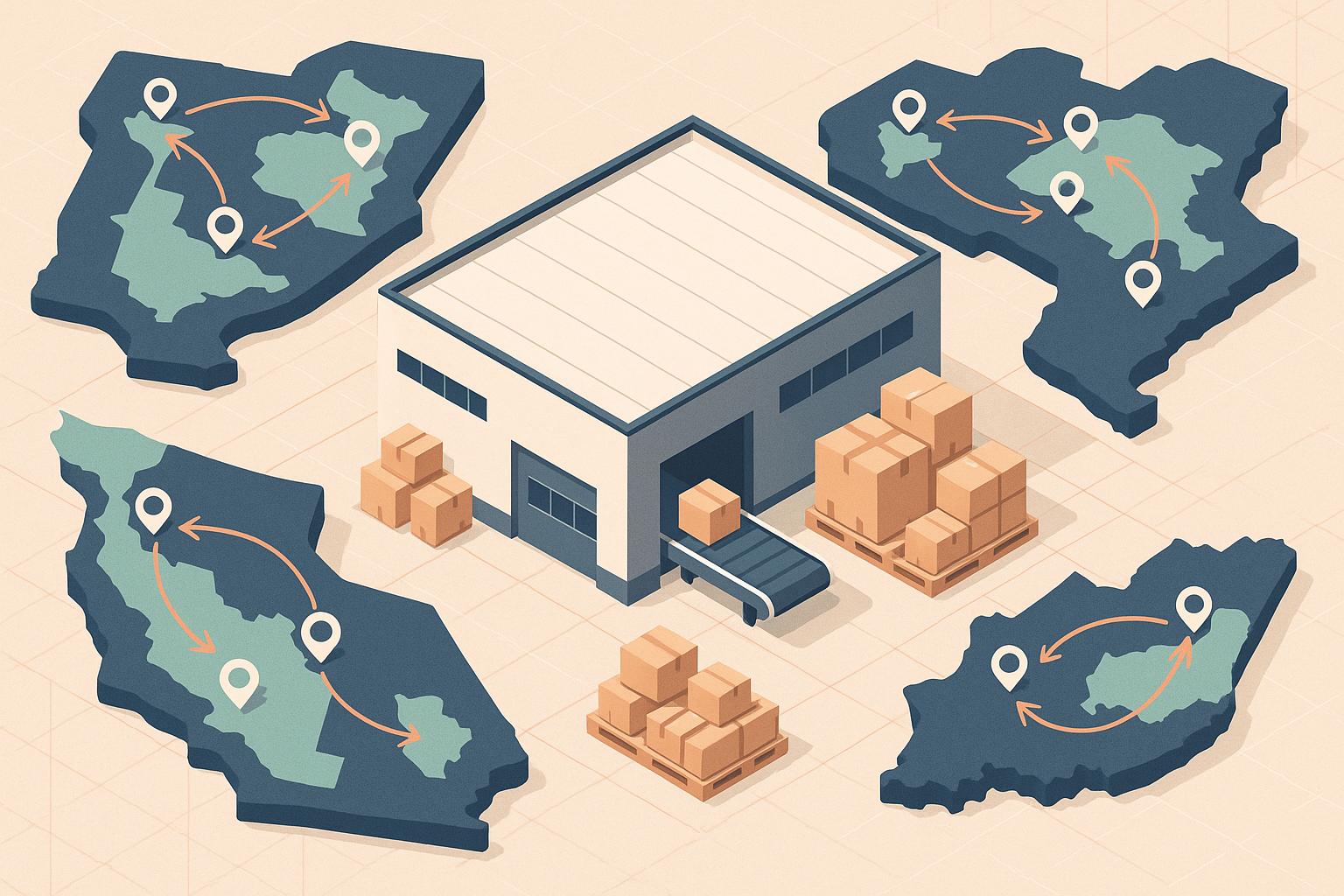Return fraud is a costly problem for eCommerce businesses, especially Direct-to-Consumer (DTC) brands. Fraudsters exploit lenient return policies, costing U.S. retailers billions annually. Here’s how you can identify and prevent it:
- Common Fraud Tactics: Receipt fraud (fake or altered receipts) and serial returns (frequent, suspicious returns).
- Data Analysis: Track metrics like return-fraud rate and chargeback ratio to spot red flags.
- Audits: Regularly review returns and refunds to catch inconsistencies.
- Behavioral Monitoring: Identify patterns like serial returners or unusual return timing.
- RMA Systems: Require prior approval for returns to improve traceability.
- Technology Tools: Use AI for image recognition and real-time tracking to detect counterfeit items or unusual activity.
- Policy Adjustments: Set stricter return windows, enforce original condition rules, and charge restocking fees for non-defective items.
Smarter Strategies to Detect and Prevent Ecommerce Returns Abuse
Common Types of Return Fraud
Understanding the tactics behind return fraud is key to minimizing losses. These schemes have grown increasingly sophisticated, with nearly 14% of all retail returns being fraudulent. For every $100 in returned merchandise, merchants lose an average of $13.70 to fraud. Two major examples of these schemes are receipt fraud and serial returns.
Receipt Fraud and Serial Returns
Receipt fraud involves creating or altering receipts, often using advanced tools like AI-powered editing software or inexpensive templates. This tactic accounts for 8% of all fraudulent returns.
Serial returns, on the other hand, capitalize on lenient return policies or system weaknesses. Without strong data analysis, these patterns can go unnoticed, making them particularly challenging to address.
The impact of these schemes is staggering. Return fraud cost U.S. retailers up to $101 billion in 2023, with 7% of all returns confirmed as fraudulent or abusive.
Using Data Analysis to Detect Fraud
Return fraud can eat into profit margins, but data analysis offers a solid way to fight back. Instead of relying on guesswork, analyzing data allows businesses to spot suspicious patterns and act before fraud escalates. The key is tracking the right metrics to identify warning signs.
Finding Fraud Patterns Through KPIs
Tracking key performance indicators (KPIs) like the return-fraud rate, chargeback ratio, and average financial loss from fraud helps uncover potential issues. For instance, if the return-fraud rate goes over 2% or the chargeback ratio tops 1%, it's time to take action.
Weekly dashboards can also be a game-changer. They highlight unusual trends such as regional return surges or spikes in store credit issuance, which could signal organized fraud attempts. Pairing these insights with regular audits strengthens your overall fraud detection efforts.
Running Regular Return and Refund Audits
Audits are a critical part of catching fraud. A quarterly audit should involve a team from customer service, finance, and warehouse operations. This group should inspect at least 5% of returned items to ensure everything checks out. On top of that, monthly reviews of refund reports can help identify unusual patterns, like duplicate credits, before they become a bigger issue.
Make sure to document what you find during these audits and update your Standard Operating Procedures (SOPs) to address new fraud tactics as they emerge. By staying vigilant and adapting your approach, you can stay one step ahead of potential fraudsters.
Tracking Customer Behavior to Prevent Fraud
Building on the data analysis methods mentioned earlier, keeping an eye on customer behavior can sharpen your fraud detection efforts. Observing how customers engage with your return process can uncover patterns that might hint at fraudulent activity. By combining behavioral monitoring with verification systems, businesses can spot suspicious returns before they cause financial damage. Use these behavioral insights alongside data analysis to develop a more reliable fraud prevention system.
Finding and Flagging Serial Returners
Behavioral analysis goes beyond general performance metrics to identify specific fraud trends. For example, serial returners often leave behind distinct patterns that detailed data analysis can reveal. Watch for customers who frequently return items at an unusual rate. Patterns like multiple returns from the same ZIP code in a short timeframe might point to coordinated fraud. Additionally, examining the timing of returns can provide valuable clues - legitimate returns typically align with standard timelines, while irregularities could signal a problem. Another red flag might be vague or inconsistent explanations for return reasons.
Setting Up Return Merchandise Authorization (RMA) Systems
An RMA system is a structured way to manage returns, requiring prior approval and assigning a unique RMA number to each request. This creates a clear, traceable record that helps distinguish legitimate returns from fraudulent ones.
According to the National Retail Federation, nearly 6% of all returns in 2020 were classified as fraudulent. This statistic underscores the importance of implementing a solid RMA process to minimize losses. With an RMA system, businesses can evaluate return requests and flag high-risk transactions based on factors like the customer’s return history and behavior.
A well-thought-out RMA workflow can categorize returns by risk level. For instance, low-risk returns might be approved automatically, while higher-risk cases should go through manual review. Tracking return reasons also helps identify recurring problems and ensures that returned items match inventory records accurately.
Better Customer Verification for High-Risk Returns
When an RMA system identifies a return as high risk, additional verification measures become critical. For high-value items or returns linked to suspicious activity, businesses can implement stricter measures like requiring photo IDs, two-factor authentication, or even biometric verification. The goal is to strike a balance: prevent fraud effectively without creating unnecessary friction for legitimate customers. Apply these enhanced checks only when the return shows clear signs of risk, ensuring a smoother experience for most customers while keeping fraudsters at bay.
sbb-itb-eb0f906
Using Technology Tools for Fraud Prevention
Modern technology plays a key role in combating fraud within reverse logistics, adding multiple layers of protection to behavioral tracking and RMA systems. Let’s explore how tools like AI, real-time tracking, and partnerships with 3PL providers enhance fraud prevention efforts.
AI-Powered Quality Control and Image Recognition
AI-powered image recognition helps detect counterfeit or tampered goods during the return process by comparing customer-submitted photos to authentic product images. These algorithms are trained to identify specific product features, packaging details, and signs of tampering. When customers submit photos with their return requests, the system automatically flags items that deviate from the expected appearance, allowing staff to verify returns before issuing refunds.
Returns flagged by the AI system undergo human review, while items that pass the initial screening proceed through the standard return process. This approach not only identifies potential fraud but also ensures efficiency for legitimate returns.
Real-Time Monitoring and Tracking Systems
Real-time monitoring systems are designed to catch fraud as it happens. These tools track return activities across various touchpoints and trigger alerts at the first sign of unusual behavior, enabling immediate action.
By analyzing data points like return frequency, geographic trends, reasons for returns, and timing, these systems can identify patterns that signal fraud. When multiple red flags appear, the system can automatically hold returns for further review or require additional verification steps. Integration with warehouse management systems ensures seamless tracking of both physical inventory and digital return requests, offering a complete view of each return’s journey and helping to detect inconsistencies.
Partnering with Vetted 3PL Providers Using Forthmatch

Forthmatch helps eCommerce businesses connect with 3PL providers skilled in secure reverse logistics. Through real-time service area maps and feature-based filters, you can pinpoint 3PLs that offer advanced fraud prevention tools like AI-driven quality control and real-time tracking.
The platform’s community-sourced reviews and sentiment scores provide valuable insights into how well different 3PLs handle fraud prevention. This feedback allows you to identify providers with proven success in implementing the security measures your business needs.
Forthmatch also facilitates direct communication with 3PL providers, cutting out broker fees and enabling transparent discussions about fraud prevention capabilities. Its trust scoring system, which evaluates factors like domain credibility and performance metrics, helps prioritize providers with strong records in secure return processing.
When selecting a 3PL partner through Forthmatch, focus on those offering integration with platforms like Shopify and WooCommerce. This ensures a smooth exchange of fraud detection data between your sales platform, the 3PL’s systems, and your own monitoring tools, strengthening your reverse logistics chain against evolving fraud tactics.
Improving Policies and Processes to Stop Fraud
While advanced tools can detect fraud, having clear policies and efficient processes forms the backbone of any fraud prevention strategy. These measures work hand-in-hand with technology to reduce fraudulent returns effectively.
Setting Stricter Return Policies
Define fixed return windows to balance fraud prevention with customer convenience. Most legitimate returns occur within a reasonable timeframe after purchase, so setting clear deadlines can help weed out suspicious activity.
Enforce original condition requirements by mandating that returned items remain unused, with tags attached. For electronics, ensure all accessories, manuals, and protective films are included to prevent misuse or "wardrobing" (using items before returning them).
Tailor rules for high-risk categories. Personal care items, custom products, and intimate apparel can be marked non-returnable for hygiene or personalization reasons. Seasonal items may benefit from shorter return windows to minimize end-of-season abuse.
Require proper documentation such as order numbers, email confirmations, or receipts to verify purchases. This step helps block fraudulent returns, especially those involving items purchased elsewhere.
Introduce geographic restrictions for regions prone to higher fraud rates. In such cases, additional verification steps or requiring in-store returns can help reduce risk.
Pair these policies with carefully designed fee structures to further discourage misuse.
Adding Return Fees for Non-Defective Items
Charge restocking fees or return shipping costs for non-defective items. This approach not only offsets processing expenses but also discourages unnecessary returns. Free returns can be reserved for defective products or company errors.
Adopt a tiered fee system where occasional returners face minimal charges, while frequent returners incur higher fees. This rewards loyal customers while discouraging repeat offenders.
Be transparent about fees. Make sure all charges are clearly displayed on product pages, at checkout, and in confirmation emails. This ensures customers are fully aware before making a purchase.
Offer fee waivers selectively for high-value customers or one-time returns. This approach maintains customer loyalty while still addressing fraudulent behavior.
Regular Policy Review and Updates
Monitor fraud trends monthly to spot vulnerabilities and adjust policies accordingly. For instance, tighten rules for product categories showing unusual return rates.
Seasonal adjustments can be crucial during high-risk periods like holidays. Shortening return windows or requiring additional proof of purchase for certain items can help mitigate abuse during these times.
Gather feedback and track fraud rates to refine policies. Striking the right balance ensures security measures don’t alienate genuine customers.
Stay legally compliant by keeping up with changing state laws on return policies. Work closely with legal counsel to ensure policies are enforceable across all regions where you operate.
Train employees regularly on policy updates. Consistent enforcement across customer service, warehouses, and management ensures everyone is on the same page.
Conclusion: Securing Your Reverse Logistics Against Fraud
Return fraud can lead to substantial financial losses, but by blending technology, data analysis, and well-thought-out policies, businesses can build a strong, multi-layered defense.
Effective fraud prevention hinges on a combination of strategies. Using data-driven tools, like KPI tracking and machine learning, helps spot unusual patterns early. Monitoring customer behavior and implementing RMA (Return Merchandise Authorization) systems can flag potentially fraudulent activity before it even reaches your warehouse. On top of that, AI-powered image recognition and real-time monitoring add an extra layer of automated quality control. Clear and transparent return policies, paired with reasonable fees, discourage fraudulent practices while ensuring customers still have a positive experience.
For Direct-to-Consumer (DTC) brands, working with vetted 3PL providers through platforms like Forthmatch offers a streamlined way to manage returns while incorporating advanced fraud prevention tools into the process. These partnerships bring enhanced oversight and efficiency to reverse logistics.
FAQs
How can eCommerce businesses identify and prevent return fraud from repeat offenders?
To tackle return fraud from repeat offenders, start by leveraging data analysis to uncover patterns of suspicious behavior. Look for red flags like frequent returns or unusually high refund requests. Pair this with customer behavior tracking to identify accounts with unusual activity, such as multiple returns of expensive items, which could indicate potential fraud.
Using technology tools like transaction monitoring systems and customer segmentation can make spotting fraudulent activity more efficient. You might also want to revisit your return policies. Options include adding restocking fees for specific items or shortening return windows - both can discourage misuse. Just make sure to communicate these policies clearly so customers know what to expect. This transparency not only helps curb fraudulent returns but also safeguards your business's profitability.
How do AI tools help identify counterfeit products during returns?
AI tools have become essential in identifying counterfeit products during the return process. By examining product images, barcodes, logos, and packaging, these tools can spot even the tiniest discrepancies when matched against trusted databases. This allows fake items to be flagged with precision and speed.
On top of that, AI-driven systems use predictive modeling and anomaly detection to catch unusual return patterns and behaviors as they happen. This approach not only helps combat fraud but also makes the return process more efficient, saving businesses both time and resources.
What should I consider when setting up an RMA system to reduce return fraud?
To cut down on return fraud, an efficient Return Merchandise Authorization (RMA) system needs a few essential features. Start by requiring customers to obtain a unique RMA number before initiating any return. This step ensures every return is properly verified and tracked. You can also add extra layers of security by using tools like photo uploads for return requests or one-time passcodes (OTPs) for high-value items.
Having clear, easy-to-understand return policies is just as important. Your policies should clearly state the conditions and timeframes for acceptable returns. It’s also a good idea to keep an eye on customer behavior to spot any patterns that might signal fraudulent activity. Lastly, link your RMA system with your warehouse management tools to streamline the reverse logistics process and minimize errors. These measures not only help prevent fraud but also boost overall efficiency in handling returns.


